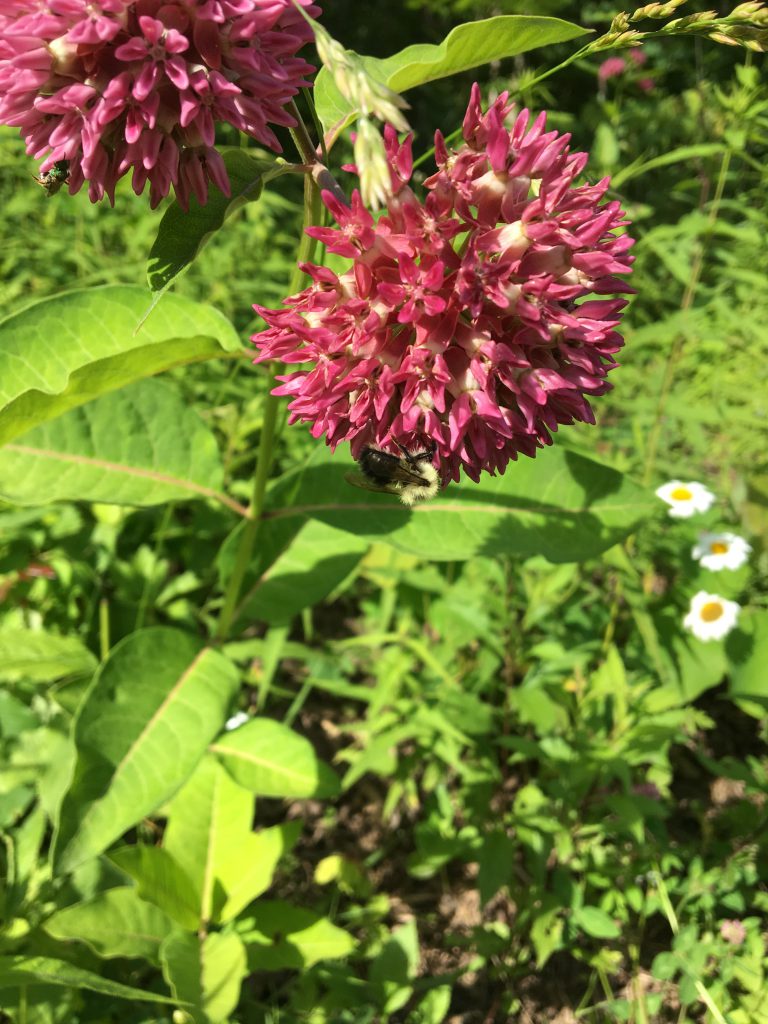Which trees make up our forest? Why do oaks, beeches or pines rule in your nearest patch of woods? It’s the rocks, soil and shape of our hills (and mountains, in neighboring states) that decide who grows where.
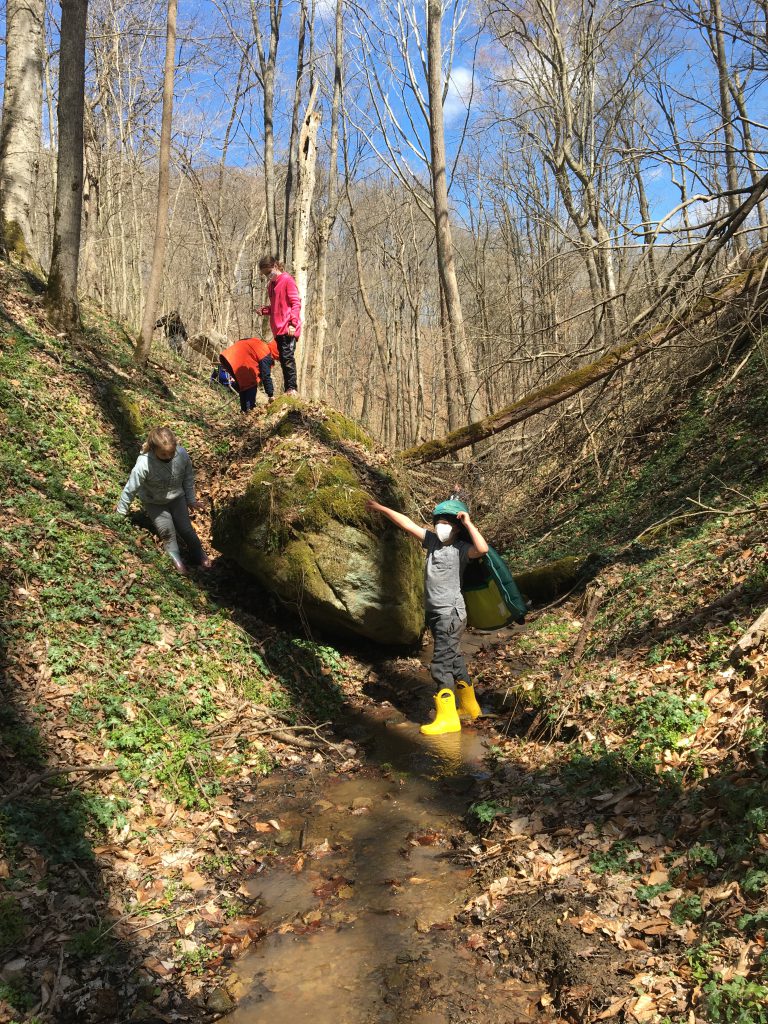
It might seem like all of the forest is the same. But pay attention, and you’ll find completely different trees, plants and animals living in one spot than another. Animals come to feast on the acorns in a chestnut oak patch on a dry, sunny ridgetop. But at the bottom of the hill, you can hunt mushrooms in the moist shade of hackberries and blue ash.
Learn to see the many forests within our forest on this week’s virtual field trip!
Join the zoom field trip on Friday, April 16 at 10:30am.
Get inspired by a few of these ways our educators help the Earth.
How will you help? Share a story or picture to tell us how you will take care of nature!
Virtual Field Trip: Friday
, April 9 at 10:30 amOn Fridays from 10:30 to 11:15 AM, we hold a Zoom call live from the woods for anyone who wants to join. This week, we’ll take a closer look at the Appalachian Ohio trees we take for granted, hiking the forest from top to bottom!
As more and more people return to in-person school, we will stop doing weekly virtual field trips after April 16. We’ll continue to announce less frequent public virtual field trips through the summer, and to be available for private virtual field trips for classrooms and groups.
If you haven’t registered for our field trips before
, register here to get the link in your email:Teachers: Your class is welcome to join this public virtual field trip. You can also contact us to schedule a virtual field trip just for your class
, which sometimes works better. Email darcy@ruralaction.org.How the hills shape the trees
A brilliant botanist named Dr. Lucy Braun studied forests in Ohio, Kentucky, West Virginia, and Tennessee in great detail during her career in the previous century. She published an amazing book in 1950 about her studies, Deciduous Forests of Eastern North America, that has really helped me to understand our forests. She called Appalachian forests “mixed” forests because of how diverse the trees can be!
How diverse are our forests?
If you were to hike through a tropical rainforest near the warm equator, there are so many kinds of trees that you may see each species only once or twice on a several mile walk. In a tropical rainforest, you can be pretty sure that two trees next to each other are different species.
Travel far north to the cold and snowy boreal forests of northern Canada, however, and there are only a few kinds of trees. The same handful of species dominate miles and miles of forest. You can be pretty sure that, in the northern forests, two trees next to each other are the same species.

Southeast Ohio is somewhere in the middle of this spectrum of tree diversity. Walking through your favorite forest in our neck of the woods, you will sometimes see the same tree species next to each other. Just as often, you will see different trees next to each other, because we have many tree species in our forests (Ohio Department of Natural Resources has about 70 tree species in their common trees of Ohio field guide).
Why are forests so different in these examples? What are some differences between tropical rainforests, Ohio, and northern Canada? We would love to hear your answers!
Our hills create lots of diverse micro–habitats: places with different temperatures, resources, and moisture than other parts of the forest. To figure out what kinds of trees will grow, look at:
– What rocks and soil are there?
In Athens County, Ohio, sandstone makes up most of the bedrock (the solid stone underneath the soil and plants). Sandstone is acidic and crumbly; you might have seen sandstone rock shelters like Old Man’s Cave.
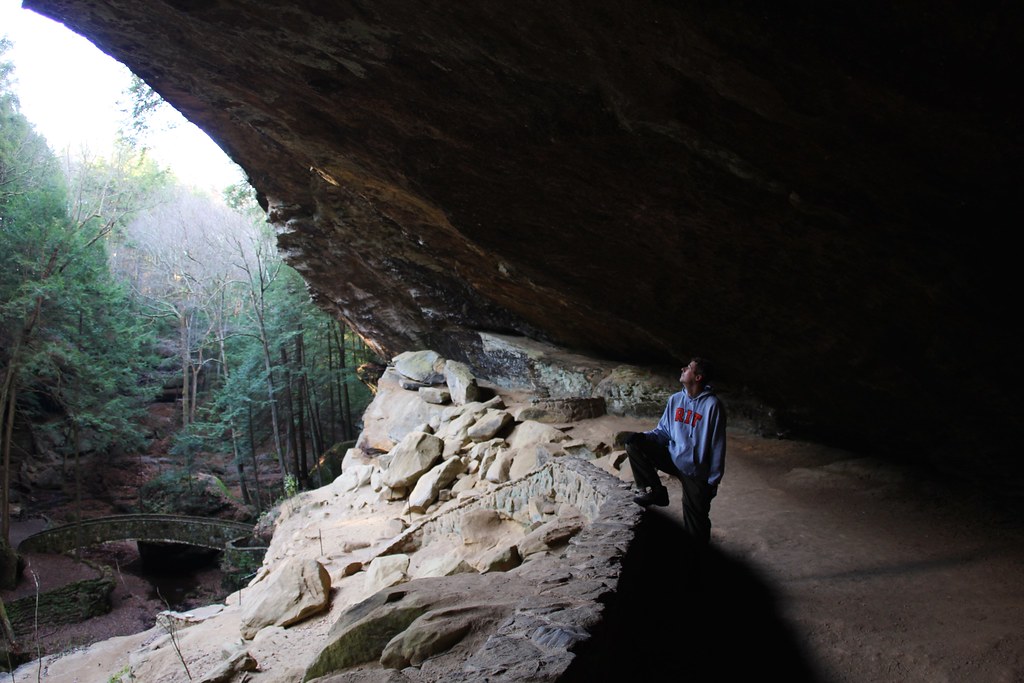
But every now and then there’s a patch of limestone, and you’ll see trees and plants that are rare here! For example, eastern cedars are everywhere around Cincinnati, where limestone is common. But I’m surprised when I see one here, where limestone is rare.
The hills also impact soil. Soil might be thin or gone at the top of hills. That’s because water washes the soil down the hill. You have to be a tough tree to grow out of rock! Virginia pine is a tree that usually grows only at the very tops of ridges: straight out of the sandstone rock, where there’s no dirt, and where the ground is very dry.

Meanwhile, that soil and old leaves build up at the bottom of the hill. The soil might be inches thicker down there! It’s easier for many kinds of trees to use that kind of soil.
– How wet or dry is it?
Appalachian forests get a lot of snow and rain. It’s wet here! But it doesn’t stay wet everywhere because of our hills. The water drains down from our hills into creeks and rivers. The top of the hill is dry. The bottom of the hill is wet (there might even be a creek). There might be flat spots where the rain doesn’t drain off as well
, and stays puddled on the ground.Some trees (like swamp white oak and silver maple) grow better in swamps or along rivers. Their roots can stand being underwater!
But other trees could not survive in such wet areas. Many of our tree species
, like red oak and basswood, grow well towards the middle and bottom of these well-drained hills.
Have you ever heard a sycamore tree called a “mushroom tree”? Sycamores grow in moist ground along creeks–and tasty morel mushrooms love moist spots too!

– How much sunlight does the hill get?
Some hills face south, others north, east, or west. Because Ohio is in the northern hemisphere, the sun is always in the south part of the sky. South-facing hills get more sunlight: they’re warm and the water dries up. The north side of hills gets less sunlight: it’s cooler and wetter.
The hills also create many different microclimates: shady ravines
, dry ridgetops that get a lot of sunshine, and everything in between.
So some trees like growing on different sides of the hill. Look for sugar maples (which gives us maple syrup) on the cool, shady north side of the hill.
On the wet side of the spectrum, species like butternut and kingnut hickory only grow very close to creeks. Between the hickory nuts and the pawpaws growing fruit beneath them
, this is a tasty part of the forest too!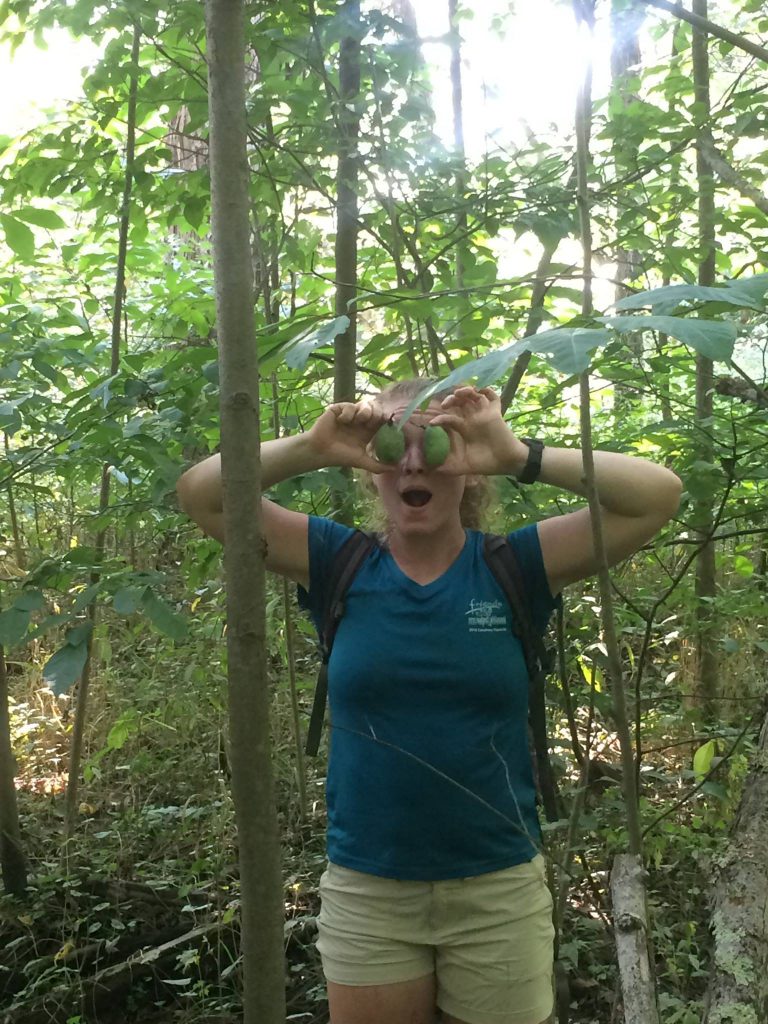
Dominant trees
All these variations mean you find many kinds of dominant trees in Appalachian forests. Dominant trees are whatever kinds of trees are found the most often in the forest. These species include:
- many types of oaks
- hickories
- American beech
- several types of maple trees
- sweet buckeye
- basswood
- tuliptree
- sycamore
- ashes
- cucumber magnolia ,
- and even more–depending on where exactly you are!
Why does it matter which tree rules? Dr. Braun wrote that “each member of the forest community plays its part.” These trees and other plants form the beginning of an amazing food chain!
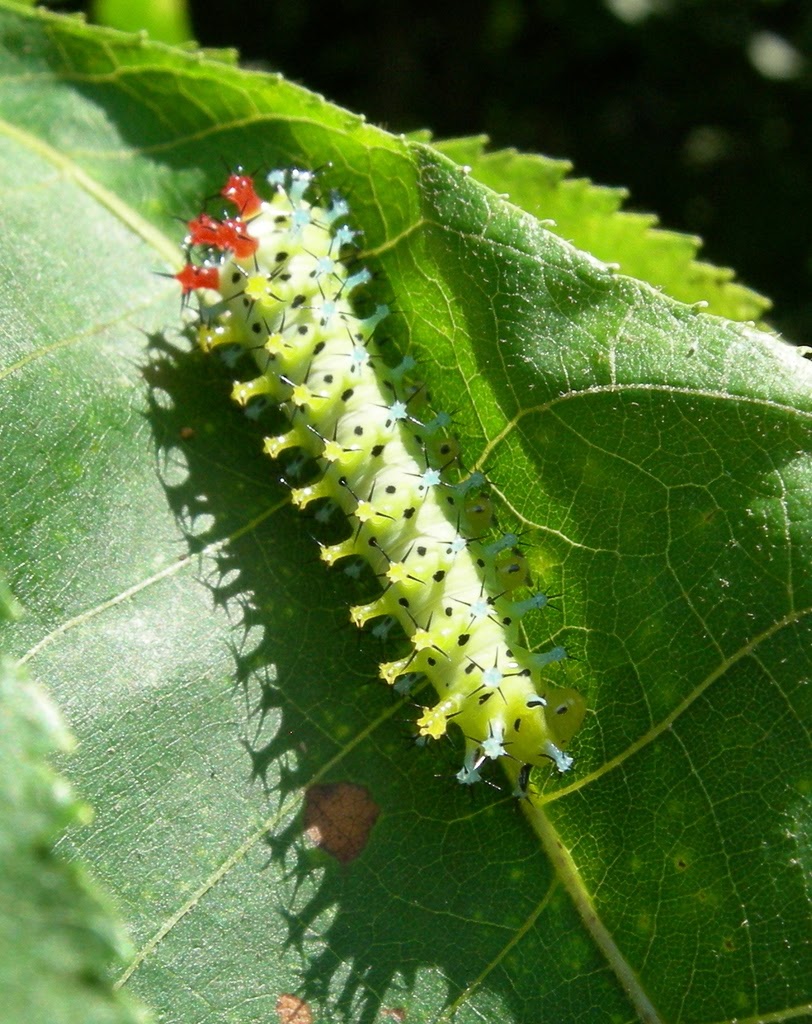
In this food chain, trees and plants feed over 1300 species of moths. Then 220 species of resident and migratory birds that eat the moth caterpillars…and so on!
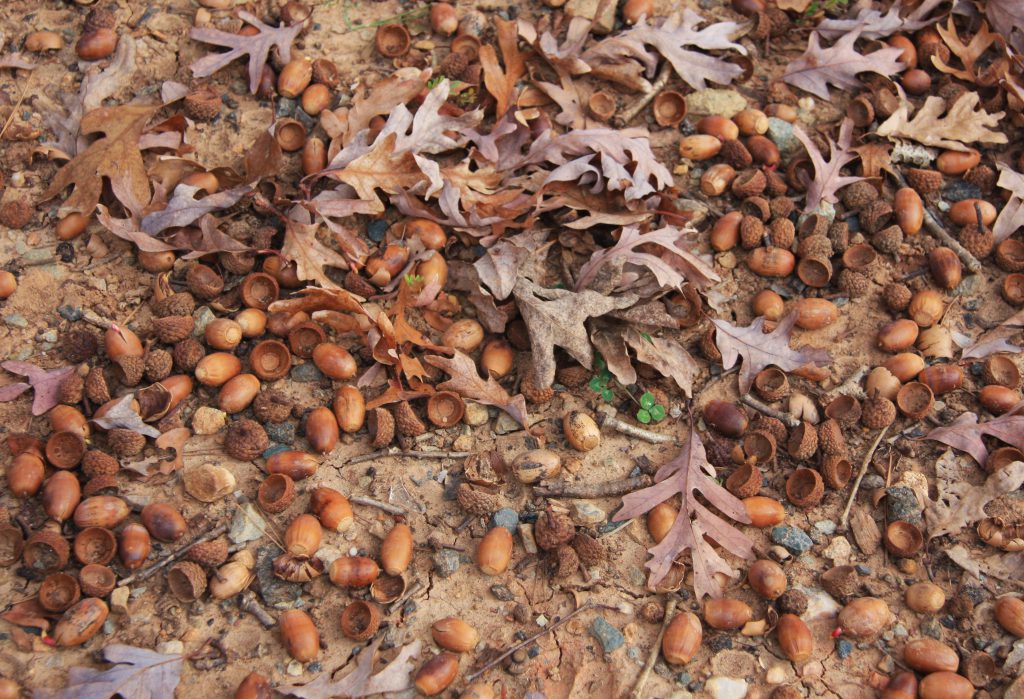
Meanwhile, lots of our trees make nuts
, including oaks, hickories, beeches, and walnuts. These nuts are the most important food for many animals, like:- chipmunks,
- squirrels,
- mice,
- deer,
- and even birds like wild turkeys, blue jays, and red-headed woodpeckers.
Activities: Compare hilltops and lowlands
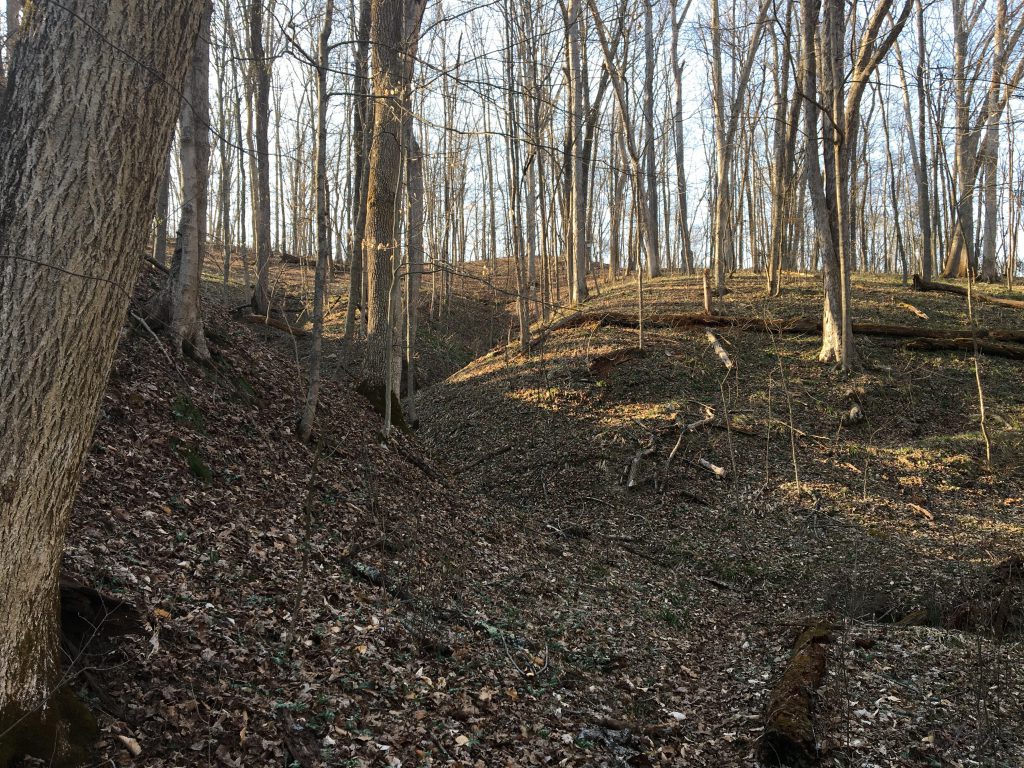
Next time you take a walk in the woods, try going high and low to see the differences yourself!
- Find a forest near a stream, wetland, or just at the bottom of a hill. Then find a forest on top of a hill. Compare them!
- Use your senses. How does each spot smell or look? Do you hear different birds or sounds? How does the air feel on your skin?
- Collect as many different types of leaves as you can in each location and compare. Are there any matches? Are there any that are different? How many different types did you find?
- Grab a handful of soil from the low area and from the ridgetop. How are they similar? How are they different?
- Think about the questions in the post above: What rocks or soil are there? How wet or dry is it? How much sunlight does it get?
- Fold a piece of thick paper in half and get it wet. Set the paper out in the sun with one side facing the sun and the other side facing away from the sun (you can also use a compass, and face one side north and the other south).
Watch which side dries out faster, or even time it. What difference might that make to plants? Try taking a compass on your next hike and see if you can guess which hills face north and which face south.
